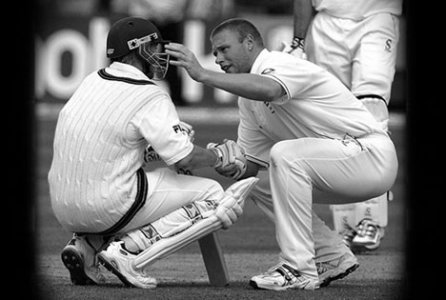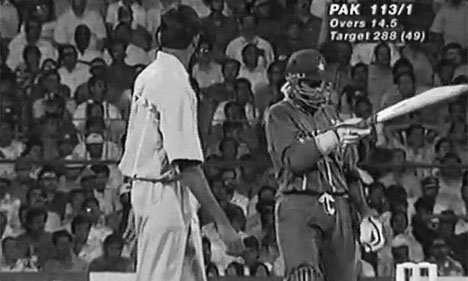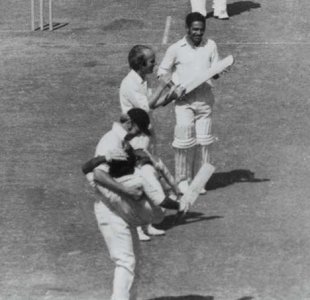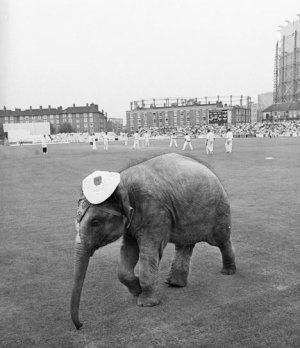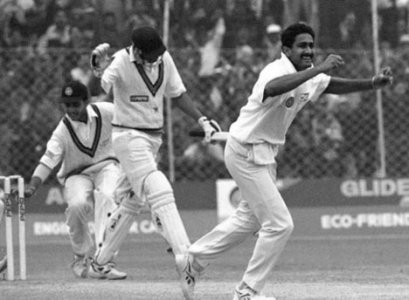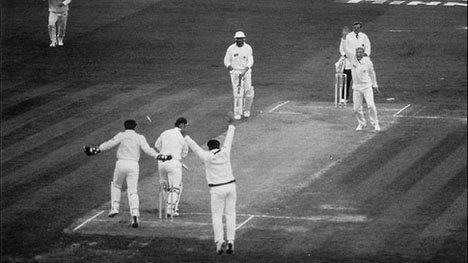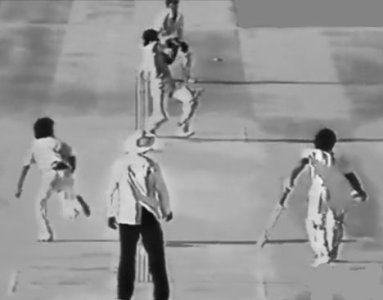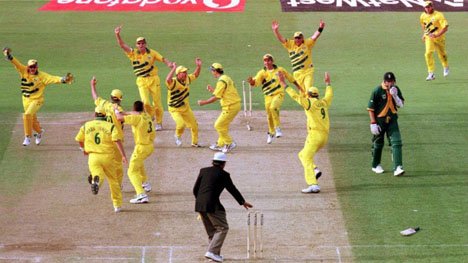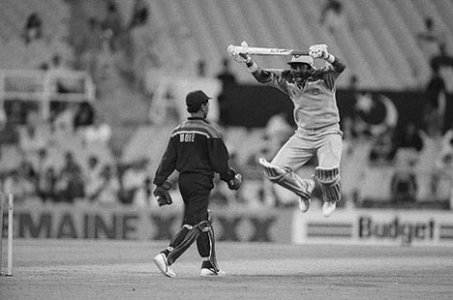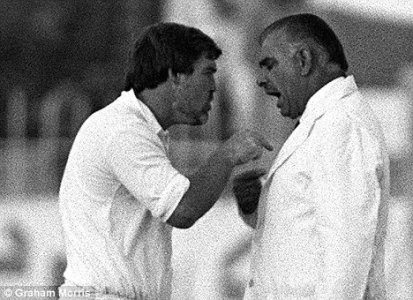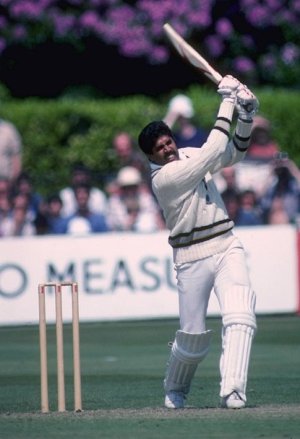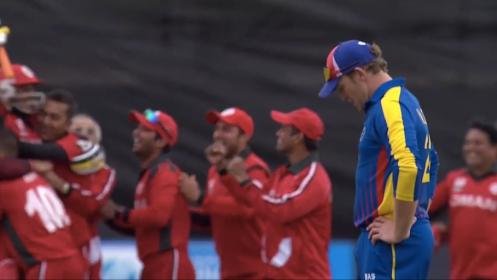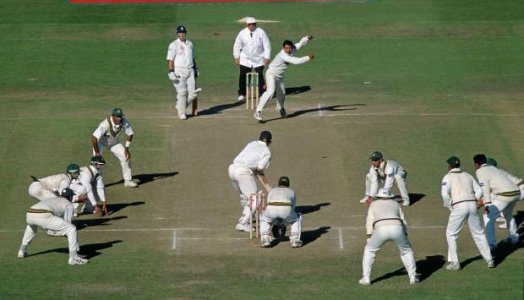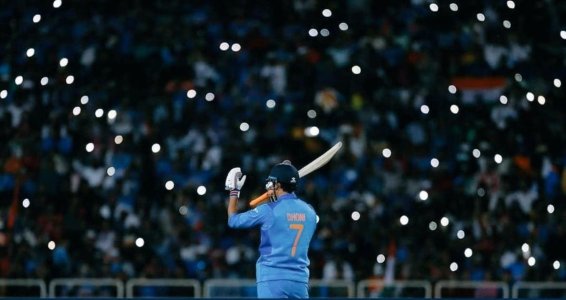uberkoen
ODI Debutant
- Joined
- Nov 2, 2011
- Runs
- 9,985
Dennis Lillie Vs Javed Miandad
[table="width:925"]
[tr][td]It was Perth in November, and the Australians were running roughshod over a visiting Pakistan team at the WACA Ground. Dennis Lillee, the cocksure leader of Australia's bowling attack and one of the great fast bowlers of Test cricket history, thought he could swagger into Javed Miandad's way as the Pakistan captain walked through for a run.
Not surprisingly, Javed -- one of the most aggressive and stubborn cricketers of the 20th Century -- took exception. He shoved Lillee aside and walked around him. As the umpire ambled over to calm things down, Lillee kicked Javed on the leg. Mistake! Suddenly Javed's bat was raised high above his head, and he might well have wrapped it around Lillee's neck had the umpire not been between them. Lillee still didn't want to let it rest, though, and only some stern words from Australian captain Greg Chappell simmered the fight down.
[/td]
[td]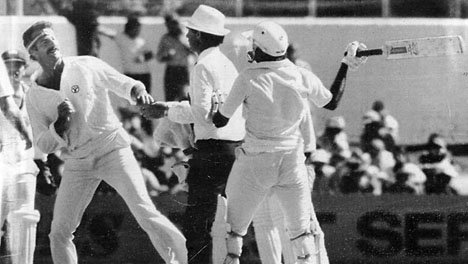 [/td][/tr]
[/td][/tr]
[/table]
Holding Sends the Stumps Flying
[table="width:925"]
[tr][td]In an act of frustration and anger at the umpire's decision of not out to a caught behind appeal, Michael Holding fumed, then walked up to the striker's end and kicked two stumps clean out of the ground.
The incident took place during the first Test of a particularly bad-tempered West Indies tour of New Zealand in 1979-1980. New Zealand won this test by 1 wicket. The next 2 Tests were drawn. At the time, the West Indies were the dominant force in world cricket.
This iconic image captured what a local paper described as "a disgraceful display of back-alley behavior" and was used as an example of thuggish behavior by the West Indian team at the time. This proved to be a critical moment in West Indies cricket history as captain Clive Lloyd vowed to restrict bad behavior on the field and harness the players' emotions into their play. After this ill-tempered tour, the West Indies would go on to completely dominate Test cricket for the next 15 years, not losing a single Test series.
[/td]
[td]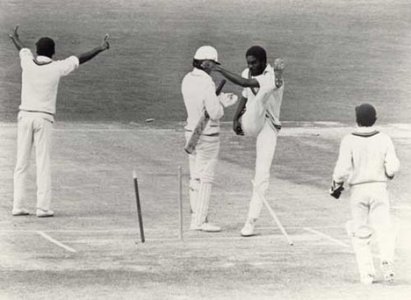 [/td][/tr]
[/td][/tr]
[/table]
The Bodyline Series of 1932-33
[table="width:925"]
[tr][td]The series produced a new word - Bodyline. It was a tactic devised primarily to negate the genius of the young Don Bradman, but it also tested and battered most of the Australian batsmen.
The tactics were not complicated. With no restriction on the number of fielders on the leg side, it meant bowlers could bowl down the leg and so, in effect, make run scoring risky and difficult as the ball had to be safely steered though a packed leg-side field. Nor was the idea new - leg theory, as it was widely know, had been around for decades and while not popular, it was effective and not uncommon.
The batsman had three choices: to move but risk exposing his wicket, to play the ball with his bat and face being caught by a ring of close fielders, or try to duck and risk painful blows.
At the end of the season MCC passed a resolution that "any form of bowling which is obviously a direct attack by the bowler upon the batsman would be an offence against the spirit of the game". This was accepted by the county captains and ratified by the Imperial Cricket Conference.
[/td]
[td]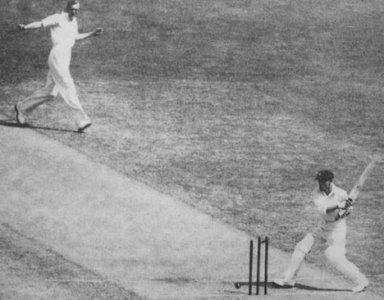 [/td][/tr]
[/td][/tr]
[/table]
Superman Jhonty Rhodes
[table="width:925"]
[tr][td]In the 31st over, Inzamam missed a heave to leg off Brian McMillan, but took off for a leg-bye even as Imran, the non-striker, took a couple of strides and then stopped. Jonty Rhodes had already made his mark in international cricket as an outstanding fielder but he chose this instant to conjure up one of the defining moments of the tournament. Sprinting in from a fairly deep backward point, Rhodes swooped down on the ball, grabbed it in his right hand - all the while closing in on the stumps - and then, ball in hand, charged madly towards the wickets even as Inzamam, who had already run one-third the way down the pitch, desperately tried to turn back and make his ground. An under-arm throw would have done the job, but Rhodes went for something far more spectacular and memorable: he threw himself at the stumps, both feet off the ground and body completely parallel to the ground. All three stumps were knocked to the ground, Inzamam was marginally short of the crease, and for a moment, South Africa had Superman in their line-up.[/td]
[td] [/td][/tr]
[/td][/tr]
[/table]
Pakistan's Oval Walkout
[table="width:925"]
[tr][td]Pakistan became the first team in 129 years of Test cricket and 1,814 matches to forfeit a match after being punished for ball tampering by the umpires, Australian Darrell Hair and West Indian Billy Doctrove.
At first it appeared Pakistan accepted the decision but when the players went off for bad light the situation turned nasty. Pakistan refused to return when the batsmen and umpires went out to the middle to resume play.
The match was originally awarded to England, until 2008 when the International Cricket Council changed the result to a draw following political lobbying by the Pakistan board. The decision was disputed by the MCC and in 2009 the ICC reversed it back to an England victory
[/td]
[td]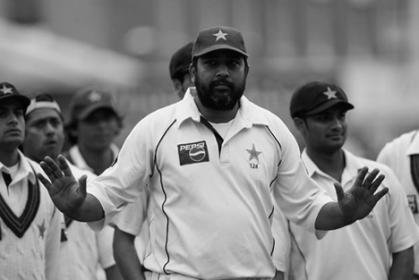 [/td][/tr]
[/td][/tr]
[/table]
[table="width:925"]
[tr][td]It was Perth in November, and the Australians were running roughshod over a visiting Pakistan team at the WACA Ground. Dennis Lillee, the cocksure leader of Australia's bowling attack and one of the great fast bowlers of Test cricket history, thought he could swagger into Javed Miandad's way as the Pakistan captain walked through for a run.
Not surprisingly, Javed -- one of the most aggressive and stubborn cricketers of the 20th Century -- took exception. He shoved Lillee aside and walked around him. As the umpire ambled over to calm things down, Lillee kicked Javed on the leg. Mistake! Suddenly Javed's bat was raised high above his head, and he might well have wrapped it around Lillee's neck had the umpire not been between them. Lillee still didn't want to let it rest, though, and only some stern words from Australian captain Greg Chappell simmered the fight down.
[/td]
[td]
 [/td][/tr]
[/td][/tr][/table]
Holding Sends the Stumps Flying
[table="width:925"]
[tr][td]In an act of frustration and anger at the umpire's decision of not out to a caught behind appeal, Michael Holding fumed, then walked up to the striker's end and kicked two stumps clean out of the ground.
The incident took place during the first Test of a particularly bad-tempered West Indies tour of New Zealand in 1979-1980. New Zealand won this test by 1 wicket. The next 2 Tests were drawn. At the time, the West Indies were the dominant force in world cricket.
This iconic image captured what a local paper described as "a disgraceful display of back-alley behavior" and was used as an example of thuggish behavior by the West Indian team at the time. This proved to be a critical moment in West Indies cricket history as captain Clive Lloyd vowed to restrict bad behavior on the field and harness the players' emotions into their play. After this ill-tempered tour, the West Indies would go on to completely dominate Test cricket for the next 15 years, not losing a single Test series.
[/td]
[td]
 [/td][/tr]
[/td][/tr][/table]
The Bodyline Series of 1932-33
[table="width:925"]
[tr][td]The series produced a new word - Bodyline. It was a tactic devised primarily to negate the genius of the young Don Bradman, but it also tested and battered most of the Australian batsmen.
The tactics were not complicated. With no restriction on the number of fielders on the leg side, it meant bowlers could bowl down the leg and so, in effect, make run scoring risky and difficult as the ball had to be safely steered though a packed leg-side field. Nor was the idea new - leg theory, as it was widely know, had been around for decades and while not popular, it was effective and not uncommon.
The batsman had three choices: to move but risk exposing his wicket, to play the ball with his bat and face being caught by a ring of close fielders, or try to duck and risk painful blows.
At the end of the season MCC passed a resolution that "any form of bowling which is obviously a direct attack by the bowler upon the batsman would be an offence against the spirit of the game". This was accepted by the county captains and ratified by the Imperial Cricket Conference.
[/td]
[td]
 [/td][/tr]
[/td][/tr][/table]
Superman Jhonty Rhodes
[table="width:925"]
[tr][td]In the 31st over, Inzamam missed a heave to leg off Brian McMillan, but took off for a leg-bye even as Imran, the non-striker, took a couple of strides and then stopped. Jonty Rhodes had already made his mark in international cricket as an outstanding fielder but he chose this instant to conjure up one of the defining moments of the tournament. Sprinting in from a fairly deep backward point, Rhodes swooped down on the ball, grabbed it in his right hand - all the while closing in on the stumps - and then, ball in hand, charged madly towards the wickets even as Inzamam, who had already run one-third the way down the pitch, desperately tried to turn back and make his ground. An under-arm throw would have done the job, but Rhodes went for something far more spectacular and memorable: he threw himself at the stumps, both feet off the ground and body completely parallel to the ground. All three stumps were knocked to the ground, Inzamam was marginally short of the crease, and for a moment, South Africa had Superman in their line-up.[/td]
[td]
 [/td][/tr]
[/td][/tr][/table]
Pakistan's Oval Walkout
[table="width:925"]
[tr][td]Pakistan became the first team in 129 years of Test cricket and 1,814 matches to forfeit a match after being punished for ball tampering by the umpires, Australian Darrell Hair and West Indian Billy Doctrove.
At first it appeared Pakistan accepted the decision but when the players went off for bad light the situation turned nasty. Pakistan refused to return when the batsmen and umpires went out to the middle to resume play.
The match was originally awarded to England, until 2008 when the International Cricket Council changed the result to a draw following political lobbying by the Pakistan board. The decision was disputed by the MCC and in 2009 the ICC reversed it back to an England victory
[/td]
[td]
 [/td][/tr]
[/td][/tr][/table]
Last edited:






